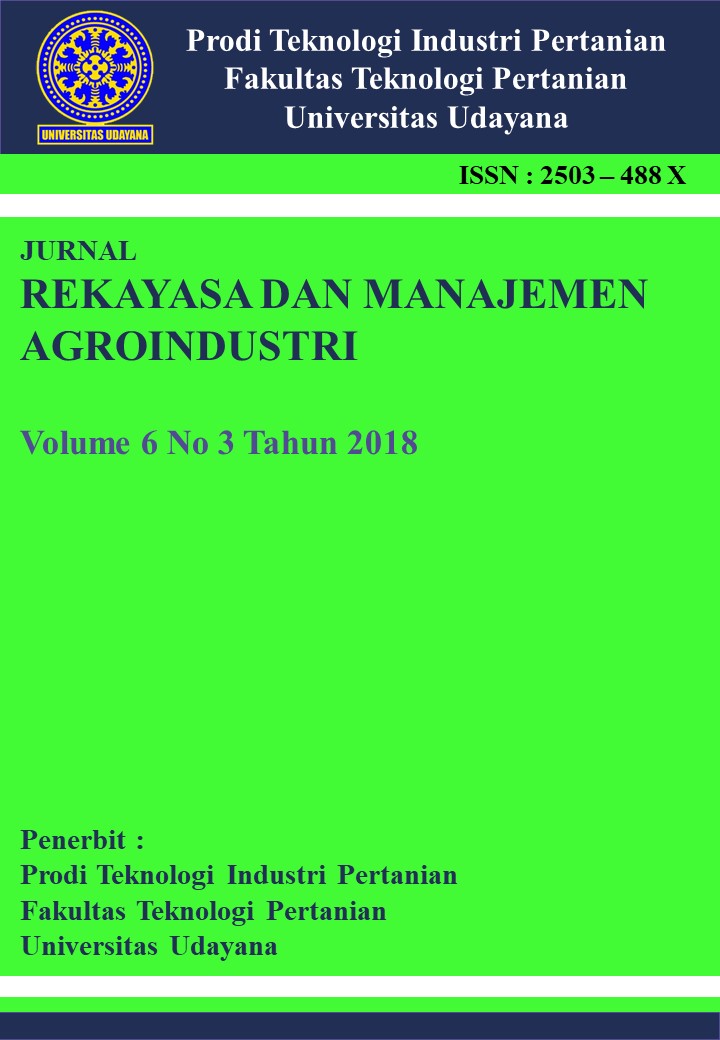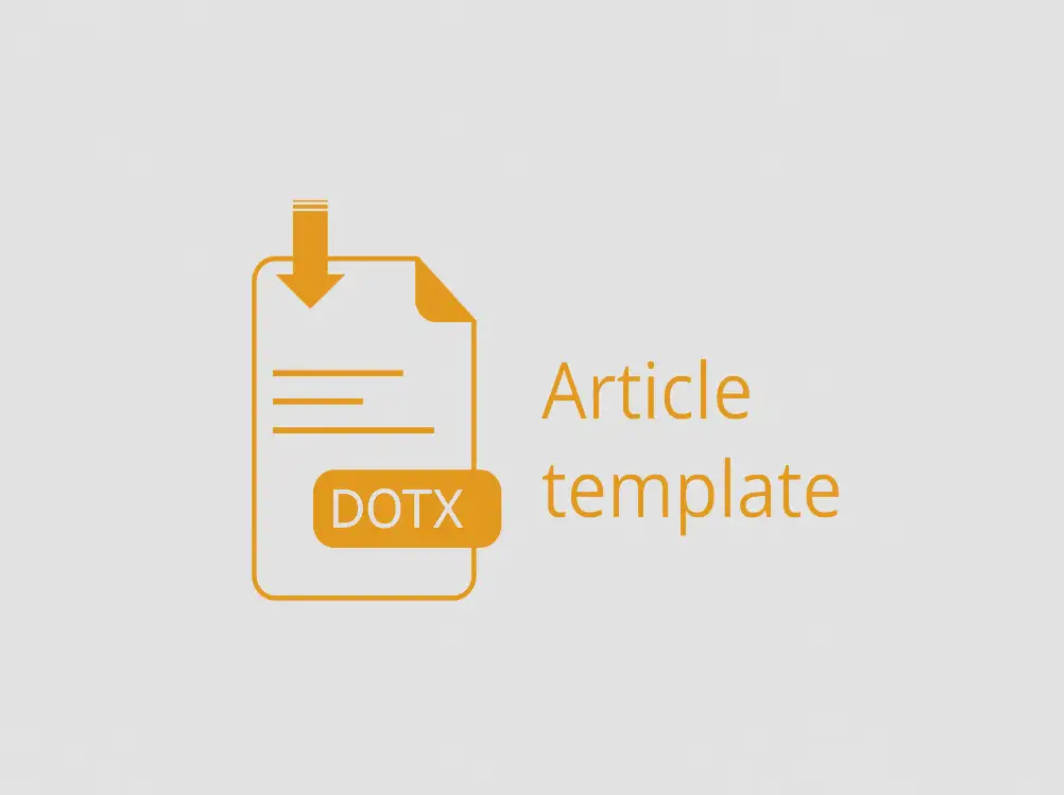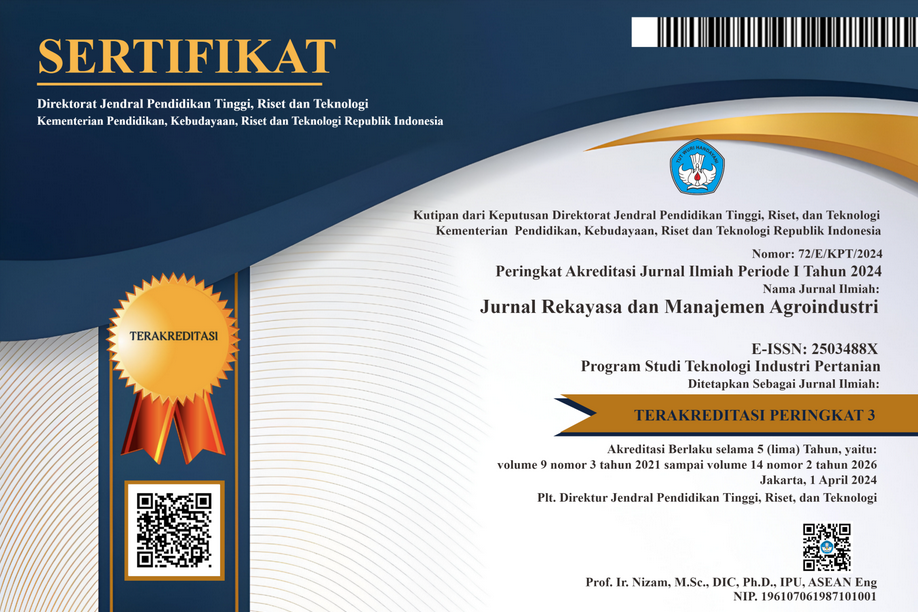KARAKTERISTIK EKSTRAK AMPAS KOPI BUBUK ROBUSTA (Coffea canephora) PADA PERLAKUAN KONSENTRASI PELARUT ETANOL DAN SUHU MASERASI
Abstract
Coffee grounds residue are the primary waste obtained from brewed coffee. Furthermore, some reports showed that coffee grounds residues still containes of bioactive compounds like caffeine and total phenolic compounds. This study aims 1) to know the effect of ethanol solvent concentration and maceration temperature on extract characteristics of coffee grounds robusta extract, and 2) to determine the concentration of ethanol solvent and best maceration temperature to of coffee grounds robusta extract. This experiment uses Factorial Random Design with two factors. The first factor concentration of ethanol solvent consists of 3 levels: 70%, 80%, 90%. The second factor is the maceration temperature which consists of 3 levels: 45oC, 60oC, 75oC. From the above two factors obtained 9 treatment combinations, each grouped into 2 groups as 18 units of experiments. The result showed that etanol solvent concentration, maceration temperature and interaction between trearments had high significantly effect on yield extract and caffeine content. The ethanol solvent concentration treatment had a significant effect, while the treatment of the maceration temperature and the interaction between trearments had a significantly effect on the total phenol. The treatment of ethanol solvent concentration 90% and maceration temperature 60oC was the best characteristic with robusta coffee extract yield 7.87±0.05% yield, 0.70±0.01% caffeine content and total phenol 11,052.83±1,124.30 mg GAE/100g.
Keywords : Coffee, coffee ground robusta, ethanol concentration, temperature of maceration
Downloads

Ciptaan disebarluaskan di bawah Lisensi Creative Commons Atribusi-BerbagiSerupa 4.0 Internasional.
Seluruh artikel di Jurnal ini dapat disebarluaskan atas tetap mencantumkan sumber yang syah. Identitas judul artikel tidak boleh dihilangkan. Penerbit tidak bertangggung jawab terhadap naskah yang dipublikasikan. Isi artikel menjadi tanggung jawab Penulis.














